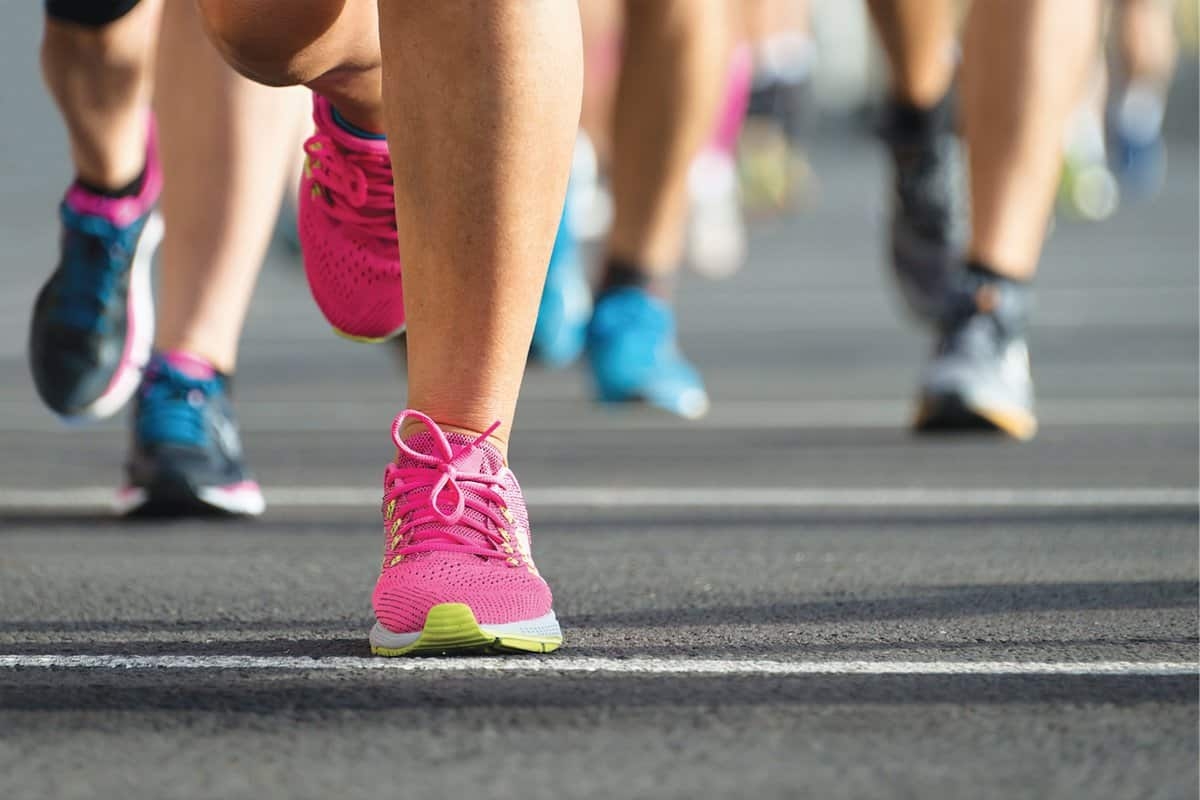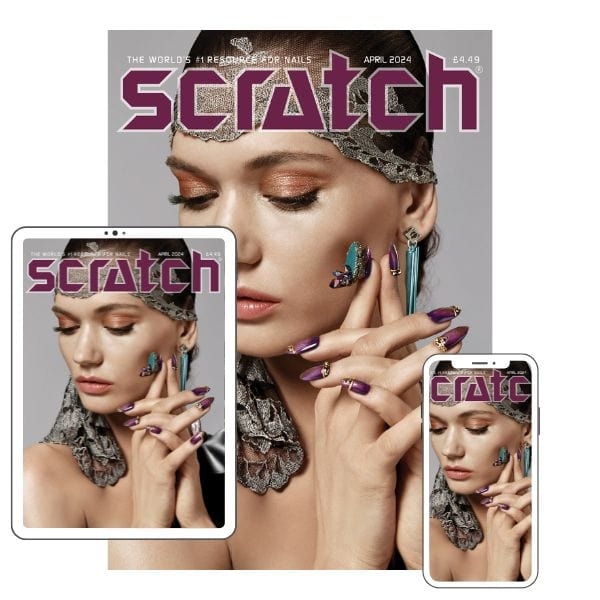
9 tips for tending to runners’ feet
By Scratch Staff | 21 April 2024 | Expert Advice, Feature

Discover the common nail and skin woes of runners, and how to tackle them for the ultimate foot finish…
“Runners can be very prone to a lot of foot problems,” explains Salon System expert, Rachel Gribble. “Hard skin, ingrown toenails and bruised nails are some of the most common. A regular pedicure can help keep the feet in good condition and prevent ingrown nails and a build-up of hard skin.”
“Pedicures aren’t just about making your feet look pretty,” adds Cindy Johnson, Jessica Nails expert & chiropodist. “Having a regular pedicure is essential in order to maintain the health of the nails and skin.”
“Typically in runners, we can see a variety of nail and skin conditions,” says Ron McCulloch, podiatric surgeon & centre director of The London Podiatry Centre. “For example, nails can become ingrown, see thickening, lifting and even corns underneath. The skin could become hard, blister and form corns. In extreme cases, runners may have infections or even athlete’s foot.”
Broken, split, lifted or blackened toenails
Trauma from regular running can damage the nail. Easy to spot, the nail may be brittle with a split or sharp, broken sections. Runners may also experience blackened nails as the result of repetitive trauma, caused by activity or wearing ill-fitting footwear.
“Black or bruised nails do not need treatment unless they are painful,” details Brenda Griffin, director of training & development at Beauty Concepts International. “If they are, a podiatrist may relieve the pressure of the hematoma build-up by drilling into the nail. Runners’ nails can often go black if they are running a lot with the wrong size shoe. Keep the nails trimmed.”
Ingrown toenails
“This a very common condition,” notes Ron McCulloch. “Some people are born with wide or curved nail plates, but they can also be caused by shoes. Cut the nail straight across to avoid ingrown toenails.”
Calluses and hard skin
“Normal hard skin is called physiological callus,” Ron McCulloch shares. “However, when it builds up too much or in the wrong place, it can be painful. Podiatrist can remove the hard skin, and I will sometimes operate to rebuild the foot so it doesn’t happen.”
“Soften the skin with Urea foot soak 15% before treating, to reduce any client discomfort when using a foot rasp,” advises Brenda Griffin. “If very painful, make sure to refer the client to a specialist.”
Verrucas
A verruca is a virus that affects an area of the skin. Requiring professional, specialist treatment, it can look like callus but commonly has a telltale black dot. Sometimes painful, the verruca could get bigger or spread across the foot. “If completely covered with a plaster, you can offer a simple dry treatment such as a nail polishing service,” Brenda Griffin reveals. “Be sure to wear gloves and refer the client to seek treatment from a healthcare professional.”

Cracked heels
When the skin on the heel thickens or becomes dry, it can lose its suppleness and split. “This is a very common issue,” comments Ron McCulloch. “Recommend a good moisturiser and regularly file and look after the skin.”
“Superficial cracks are ok to treat, but if they are painful or infected, refer your client to a specialist,” advises Brenda Griffin. “Don’t attempt to use a blade on them.”
Blisters
Mostly cause by rubbing, friction or pressure, blisters are a common foot problem – especially for runners. Caused by fluid filling in small to large pockets in the skin, they may be painful. Ron McCulloch suggests that the client should look at what the cause could be, in order to prevent them. “Do not treat blisters, as you can cause infection if they are open or if you try to ‘pop’ them,” warns Brenda Griffin.
Bunions
“Bunions require specialist treatment,” explains Ron McCulloch. “This may involve moving the bones into a better position using screws and wires. Recovery is about six weeks. Shoes can be stretched to accommodate the deformity, but correct shoe size is important.” Always refer your client if you identify a bunion.
Corns
Varying from a slight thickening to a hard, painful bump, corns are a result of pressure on the foot. Consider specialist treatment.
Athlete’s foot
“Running shoes provide a warm, dark and humid environment – ideal conditions for bacteria and fungi to live and multiply,” says Cindy Johnson. “Explain to your client that keeping their feet as dry possible is key to preventing infections, such as athlete’s foot. Encourage them to wear socks that are made of a breathable material and ensure that they fit correctly. Talcum powder inside socks and running shoes also helps prevent dampness.”
“So many people have a little bit of athlete’s foot between their baby toes, and often the pedicurist doesn’t notice until they are drying the client’s feet after the soak. Usually the client has no idea they have it either,” comments Brenda Griffin. “Put gloves on immediately if this occurs to protect yourself. If continuing with the pedicure, dispose of nail files used on the client and sterilise any metal tools used. Be meticulous in cleaning and sanitising the foot bowl, and any area the client may have touched with their foot. Give them tissue to stand on and advise the client to seek advice from a specialist. Explain that they must dry between the toes carefully and not share towels in the meantime.”

